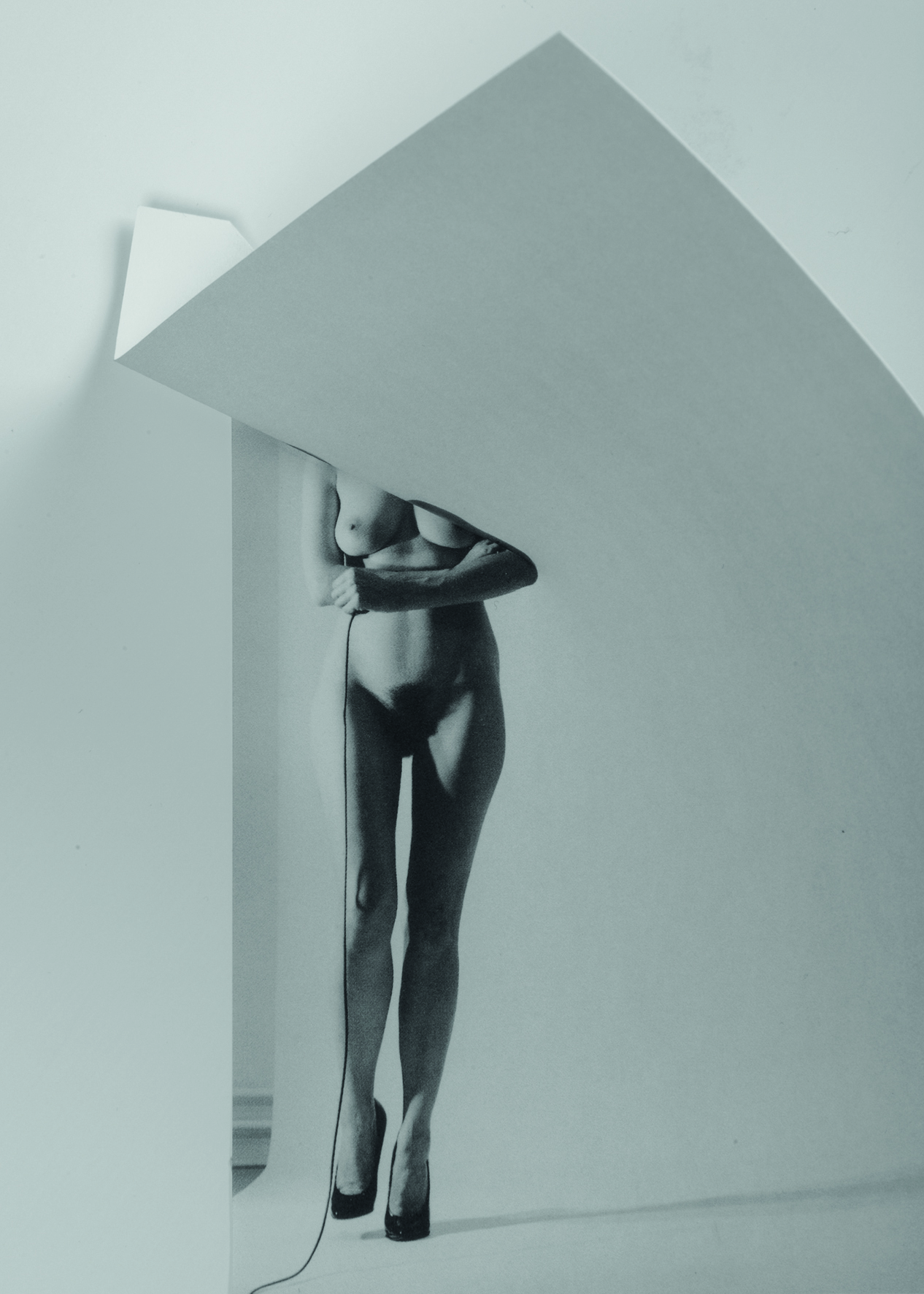DER VERSCHOLLENE: BODIES OF WORK
(»Der Verschollene: Bodies of Work« is the first of a continuing series of exhibitions at Galerie Raum mit Licht, with a focus of shedding light on the relationship of contexts and analogies in the artistic methods of various artists represented by the gallery.)
As the title suggests, Jemima Stehli and Caroline Heider’s current exhibition emphasises the human body as a medium itself, as a representational projection surface for the body of the image, doing so on more levels than just that of a revival. In contrast to the »Materialaktionen« (1964 -1966) by Otto Mühl, it is not the body and its functions formally as a material in the performances that are in focus here. Instead Caroline Heider and Jemima Stehli understand existing photographic images of the body as material to be further processed performatively: Jemima Stehli uses her own gestures to re-enact and reinterpret concepts of well-known artists, putting herself in the position of the ‘other’, by presenting her own naked faceless body in the picture as a surface for projection. These works challenge the identity of the artist’s role of both the subject and the object in her work. In her folded images (Faltbilder), Caroline Heider challenges the representation of the body of the image itself: Parts of the image are obscured through the act of folding the photographic material. The gaps can be filled by our own identification with the original image.
This extraordinary (re)staging of the body, not only accentuates the potential for self-analysis inherent in the medium of photography as a mode for the reproduction of images of the body, but also sheds light on the conditions for their interpretation. Both artists use the medium of photography simultaneously as material and as a statement by employing already existing material and extending their self-referential character, dissolving the boundaries between what is within and what is beyond representation. The actual authenticity of the body though, remains incomplete.
In Jemima Stehli’s Polaroid series »Thinking of the Pavilion«, the viewer is introduced to the mechanisms of viewing in a play of motion. In the very moment Stehli captures herself in the image, she in turn assumes the role of a projection surface, reflecting the outside world. Amidst the spatially positioned mirrors of the »Heart Pavillon« by Dan Graham, her body distorts into frenzied forms. With merely the contours of her body visible, the artist appears to be a captive of the gaze. Any complete “after”, that would usually appear in the eye of the viewer as an image, is here presented without a conclusion. The body of the artist becomes an instrument of artistic language and practice: On one hand, proof of a material reality, creating and weaving forms, yet on the other, constantly losing itself therein.
As a starting point for her 75-part series »Tips für Sie«, Caroline Heider uses illustrated pages from a women’s magazine from 1964 of the same title, encouraging physical exercise and toning for women. The placement of these works in the first exhibition space represents a kind of warm-up exercise for viewers allowing them to immerse themselves into the artist’s oeuvre. Heider’s interventions to these found images follow a clear goal based on a critical appraisal of the image – “the entanglement of the bodiless image with the image support (picture)” (Caroline Heider). The imaginary space of the body and the deformed body of the image interact in unusual ways. Through the application of folds in the body of the image, new fragmented images of women’s bodies are transported to an “after”, unfolding metaphorically speaking from the “before”, in their form as representations of prototypes in their wholeness. As a result of these obstructions, the women’s bodies are transformed into grotesque distorted images of withholding, whose blank, vacant spaces we have anyways always populated with our own perceptions and understanding of the images.
Poses, originally taken from the commercial context of fashion photography and then re-enacted in the studio, serve as a template for Caroline Heider’s series »Like models«. And not unlike Jemima Stehli’s Polaroids »mm«, stereotyped gestures come into view here too. Yet while Jemima Stehli draws upon the established means through which fetishist clichés are inscribed into and reproduced in the feminine body, re-enacted in pictorial space in front of and among mirrors, Heider delves into her own body of work and through the folds showcases the body of the image as a fetish for the gaze.
Jemima’s own feminine body, undergoes an obsessive fixation in »After Helmut Newton’s ‘Here They Come’« in which she herself becomes the material of repetition in analogy to Helmut Newton’s famous series of photographs. Unlike the original however, the emphasis here does not lie on the depiction of the “phallic woman” as an object of fantasy, yet on her authorship as a woman (Barry Schwabsky). Caroline Heider’s current series »Jemima Stehli – Orange«, »Jemima Stehli – Red« and »Jemima Stehli, After Newton’s Here they come II, S. 28« arose in direct relation to this work. Stemming from reproductions of Stehli’s work, Heider’s interventions lead to a new definition of the series. In this exhibition, by now historical gestures of representation find new individual artistic means of expression, continuing the endless longing for the object of the image.
In »Der Verschollene: Bodies of Work« Caroline Heider and Jemima Stehli’s works speak of a possible subjectivity that only then emerges through the image, fades within the image and yet continues to persist therein.
Text: Käthe Hager von Strobele
